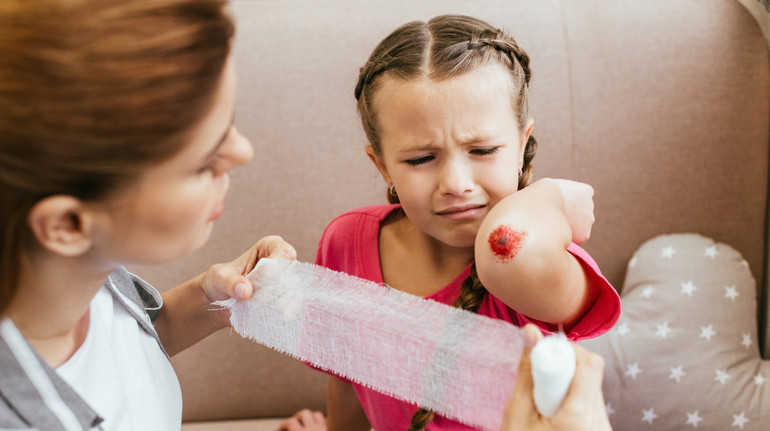How to clean the wound at home and when to see a doctor

How to clean the wound at home and when to see a doctor
Photo: Igorvetushko/Depositphotos
Wounds come in different sizes and depths, and some of them need professional medical care, whereas others can be handled alone.
If there is a risk of infection whether it is not possible to stop bleeding, you should consult your doctor immediately. However, for less serious cases, such as scratches or small cuts, you can treat the wound at home.
How to determine the severity of a wound – a certified nurse Evan Minor She explained Cleveland Clinic.
Assessment of the severity of the wound
After injury, the first thing to do is to evaluate the seriousness of the wound. If it is surface (a small scratch or cut), you can handle it at home.
You should consult your doctor if a wound:
- opens a bone, organs or blood vessels;
- Heatly bleeds and the blood does not stop, even after pressure is used;
- formed as a result of puncture of any kind;
- located on the face or genitals;
- caused by the bite of an animal or humans.
The assessment of the severity of the wound is an important stage. If the wound is particularly deep, seams or surgical treatment may be required.
If you are not sure if the wound is serious, it is always better to exercise caution and see a doctor to see it.
If you are dealing with burns, you may need immediate help and different levels of treatment.
Steps of wound cleansing
Here are some steps to help reduce the risk of infection.
Wash your hands
If possible, avoid touching the open wound until you wash your hands thoroughly. This important step minimizes the risk of bacteria to the wound.
Apply pressure
Blood with small scratches and cuts usually stops by itself. But if you have a more serious wound, gently press the area around it until the bleeding stops or before providing medical care.
Clean the wound
Do not use alcohol or hydrogen peroxide. They can further irritate the wound and hold the healing process.
Instead, use soft cloth, soap and warm water to work out the area around. Then gently rinse the wound under warm running water.
Remove the garbage
If there are clear garbage particles (such as small stones or rocks) in the wound, carefully remove them with clean tweezers. Any larger particles should be treated.
Close the wound with a bandage or bandage
If you have a small scratch or cut, they are not necessarily bandaged – it is better to give them some air.
But larger wounds may require sterile bandages or gauze to protect against further infection. Banders also help maintain a damp environment that promotes healing.
Clean daily
Remove the bandage at least once a day. After cleaning the wound, apply a new bandage. In the case of more complex wounds to prevent infection, washing may be needed two to three times a day.
When to see a doctor
If you cannot stop bleeding or evaluate the wound as serious, you should consult your doctor immediately. Medical care is also required if you notice the signs of infection, including:
- increase, increased pain;
- redness that spreads around the wound or red stripes on the skin;
- swelling around the wound;
- The site is hot to the touch;
- Manure or other liquids are released from the wound;
- The wound smells unpleasant;
- fever or chills;
- General malaise.
« If the doctor has treated the wound but your condition does not improve within 90 days, I recommend consulting another doctor – from a surgeon or specialist in wound treatment », – advises Minor.
Earlier scientists
explained
Why people have wounds heal almost three times slower than animals.







